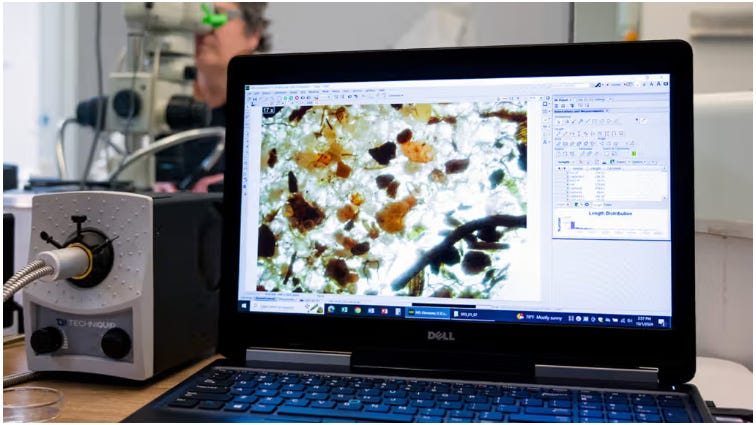How Can You Avoid Exposing Your Brain to Microplastics?
excerpt from Medical News Today
img credit: MediaNews Group/Orange County Register via Getty Images
The link between microplastics and health is a rapidly evolving area of science.
A recent commentary reviews this relationship, particularly focusing on brain health.
The authors also outline ways to reduce exposure to microplastics.
A new commentary article, which appears in the journal Brain Medicine, discusses microplastics and their links to health.
Below, we outline the main topics touched upon in the commentary and ask whether it is possible to reduce exposure to these omnipresent shards of polymer.
Microplastics are getting into our brains
Plastic does not biodegrade. Instead, it slowly breaks down into ever-smaller pieces.
Microplastics, as the name suggests, are the microscopic debris that packaging will eventually become.
Because of the way in which plastic gradually breaks down, microplastics come in a wide range of sizes.
This means that they are the right size for every animal on Earth to swallow or breathe in.
Because of this variety in size and their sheer ubiquity, they are present in every food chain and on every dinner plate in the land.
According to the authors of a review on the topic: “Emissions of microplastics to the environment are estimated to be between 10 and 40 million tonnes per year, and under business-as-usual scenarios, this amount could double by 2040.”
Research into microplastics is still in its infancy, but already, scientists are unearthing worrying links. For instance, there is some evidence that microplastics in blood might negatively impact heart health.
Other scientists have also found microplastics in lungs and evidence that they might impact fertility and the gut microbiomeTrusted Source.
Similarly, a study published this year found more microplastics in human brains than in any other organ.
It also showed that people who died in 2024 had, on average, 50% more microplastics in their brains than people who died just 8 years earlier.
Clearly, this is a growing issue.
How to reduce exposure to microplastics
The term “microplastics” first appeared in a scientific paper just over 20 years ago. Since then, interest has grown exponentially, but scientists are still trying to understand what factors influence an individual’s exposure and how to minimize it.
Although avoiding them entirely is impossible, the authors of the recent commentary include some science-backed ways to reduce exposure. Below, we outline their advice, including input from other experts.



